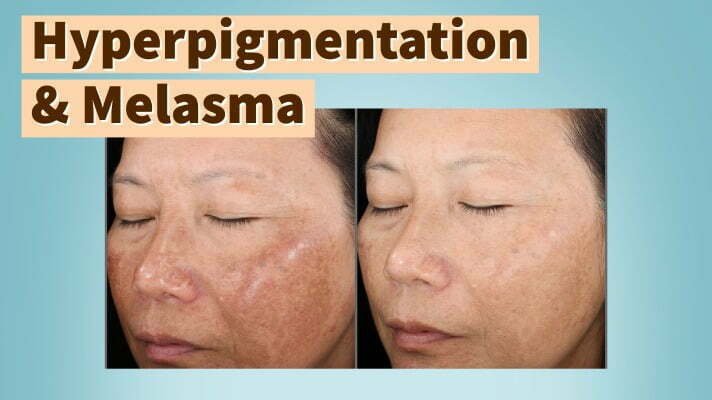Summary
This blog post focuses on facial pigment and melasma, a condition resulting in dark, irregular patches primarily on the face. The article recommends that people experiencing persistent pigmentation or melasma to consult with a medical dermatology professional. Over-the-counter products and in-office procedures like chemical peels and lasers are also recommended. The blog post suggests a video by Dr. Gray for further insight and advice about treating melasma and pigmentation.
Hyperpigmentation affects skin of all ages and can be incredibly challenging to treat.
It includes a variety of skin conditions like freckles and sun spots and even more stubborn forms of pigment like melasma, often referred to as the ‘mask of pregnancy’ or ‘sun mustache’. Melasma can be a significant cosmetic concern, whether you are a soon-to-be mother, a sun worshipper, or simply someone facing hormonal changes. It manifests as dark, irregular patches primarily on the face – on the cheeks, bridge of the nose, forehead, and upper lip.
Melasma can be either epidermal, dermal, or mixed – making it a very stubborn condition that requires patience and caution when treating. It is also important to note that when it comes to melasma, we can’t cure it but we can control it. If you find yourself troubled by persistent or widespread melasma, it’s highly recommended to book a consultation with a dermatology professional for a thorough evaluation and personalized treatment plan. To request an appointment with a DCA provider click HERE.
However, if you’re dealing with a milder case of pigmentation and wish to explore skin care products and basic in-office procedures first, we’d love to equip you with some valuable information.
First, when it comes to skincare, you MUST be using SPF 40-50 DAILY.
Daily sunscreen protects your skin and also protects your results after investing time and money into procedures. We have a selection of products specifically designed to address pigmentation – including prescription-strength hydroquinone products and the new Even & Correct Brightening System from SkinMedica – that are available in our Advanced SkinCare Center and in our online Advanced SkinCare Store. Vitamin C has been proven to be an effective brightening ingredient, especially when used daily along with a broad-spectrum sunscreen. So we also recommend adding a high-quality antioxidant product into your morning skincare regimen. For DCA-approved antioxidant products, have a look at our Antioxidant Collection in our online Advanced Skincare Store.
Second, for procedures, aggressive treatments can actually make melasma worse, so at DCA our approach is always “low and slow”.
A series of Hydrafacial treatments with brightening boosters is a great start: these treatments will improve and maintain the appearance of dermal pigment. Then, chemical peels can be very beneficial when treating pigment, and they require very little downtime. We carry peels in a variety of strengths and your provider can assess and recommend which chemical peel would suit your condition the best. Out of the different laser treatments that we offer, we find the HALO Hybrid Fractional Laser from Sciton to be the most effective when it comes to Melasma. Schedule a consultation in our Advanced SkinCare Center to find out which treatment plan is the best for you.
For an even deeper dive into treating Melasma and pigmentation, check out this video from Dr. Gray on Skin Tone Issues. In just a few minutes you’ll acquire an array of melasma insights and practical advice for managing and treating pigment-prone skin.
And remember: in the spring and summer months your pigment will always be more evident. During these times of year we naturally spend more time outside, and increased exposure to sunlight along with warmer temperatures makes pigment appear darker even if you are taking every precaution, so just keep that in mind and don’t forget to apply — AND REAPPLY — your sunscreen!






